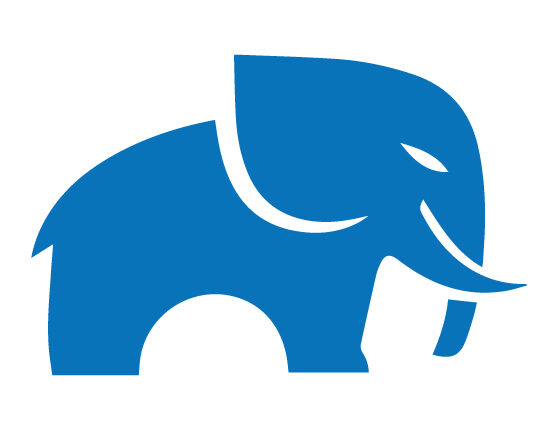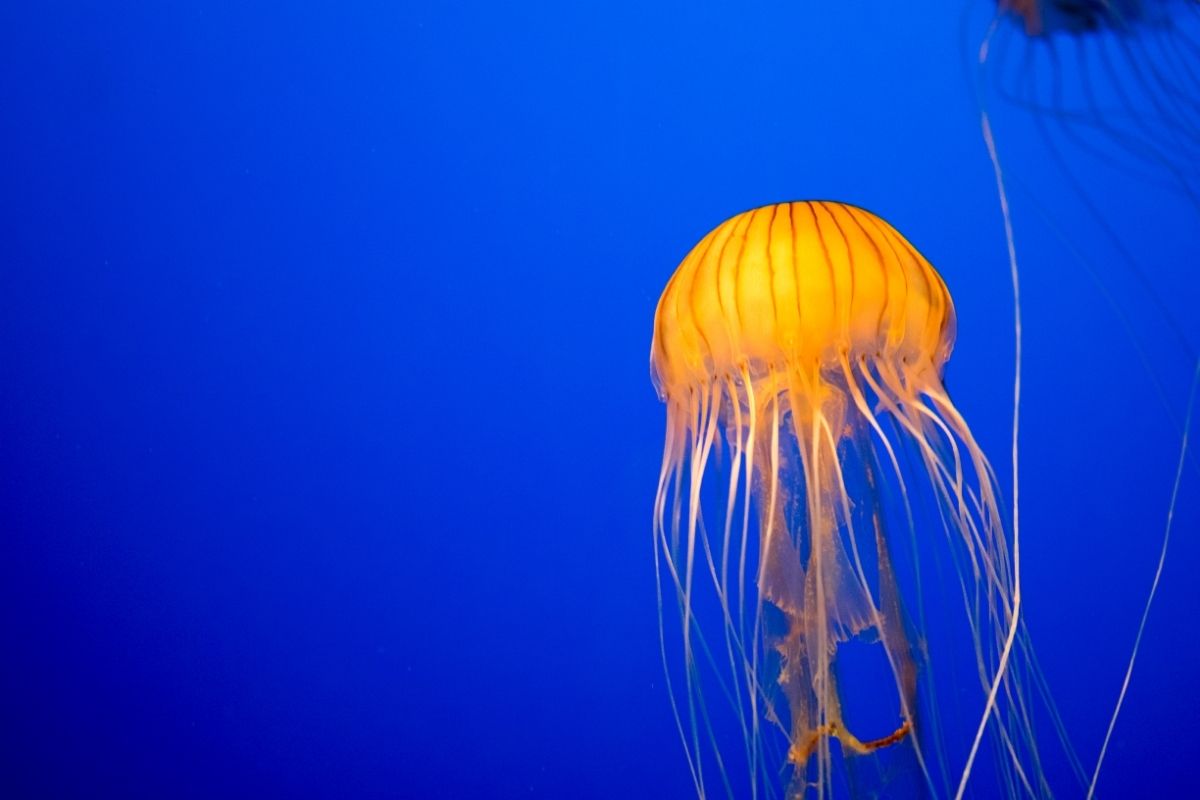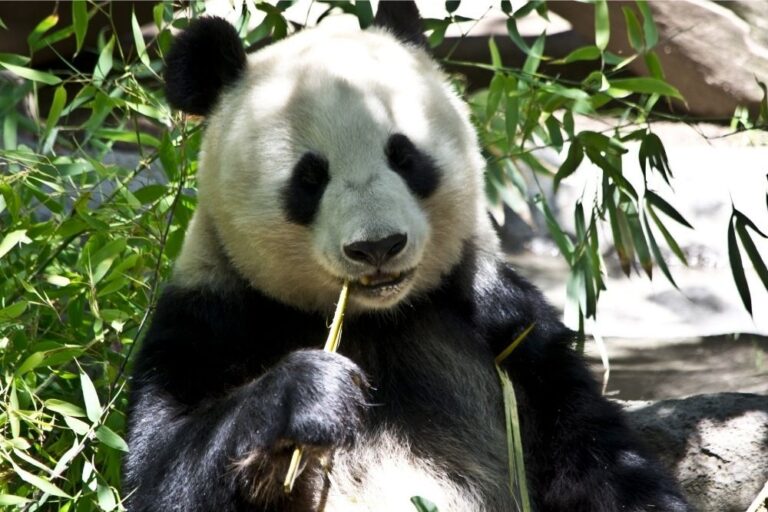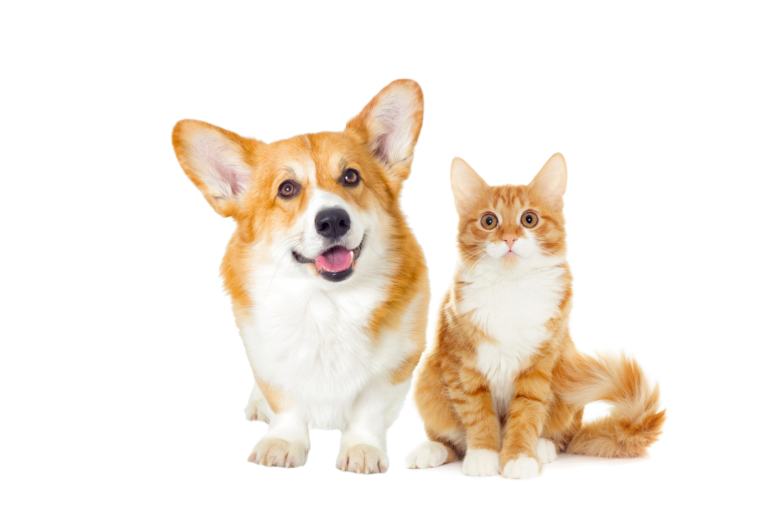What Do Jellyfish Eat?
Last Updated on March 3, 2022 by
One of the many wonders of the ocean, jellyfish are odd, unique creatures that live underwater. They come in many shapes and sizes, some are even venomous or can sting while others can not.
The bouncy and delightful creatures are quite often translucent and an absolute joy to ponder.
‘Jellyfish’ is the most common term to describe animals of a gelatinous look, however, they are many species of jellyfish that exist, including box jellyfish, sea nettle, Portuguese man-of-war, moon jellyfish, lion’s mane jellyfish, sea wasp, and sea hare.
Each has its distinct shape and coloration. The lifeline of a jellyfish also varies depending on the species, but most will live for less than a year, with some species only living for a few days!
So, what do these strange and amazing creatures eat? Let’s find out!
What Do Jellyfish Eat?
The first thing you need to know about jellyfish is that they’re not fish at all! They’re cnidarians (a type of animal) which means they have no backbone and no bones.
It allows them to move around easily because they don’t have any extra weight holding them down, which is what gives them their jelly-like appearance.
They are usually found in tropical waters, where there is plenty of sunlight and warm temperatures.
However, if conditions change too much, they may migrate to cooler water. Jellyfish are known to be carnivorous, meaning they feed on other organisms such as plankton, small fish, crustaceans, mollusks, worms, etc. Some species are more predatory than others, so it depends on the jellyfish species.
Jellyfish are classified into two main groups: Scyphozoa and Cubozoa. Scyphozoa includes the box jellies, sea wasps, Portuguese man o’ war, and stinging cells.
These jellyfish have tentacles that contain nematocysts, which are used to capture prey. Nematocysts are tiny harpoons that inject venom when touched by a predator.
Cubozoan jellyfish are similar to Scyphozoa, except they have eight arms instead of six. Both types of jellyfish use their tentacles to catch food.
A jellyfish’s diet will mostly consist of sea plants (phytoplankton), copepods, and fish eggs or small fish larvae.
Some species of jellyfish have even been known to eat other jellyfishes! Jellyfish often swim in Blooms. What is a Bloom, you may ask?
A Bloom is the phrase used by scientists when a huge number of animals or plants appear suddenly. Jellyfish typically swim in a bloom of almost a million! That’s a lot of jellyfish needing a lot of food!
When this happens it can cause problems for fisheries as not a lot of food is left after a bloom of jellyfish.
But why do they swim in groups so large? Jellyfish are not very good at swimming and tend to simply float or drift around the ocean. A Bloom forms when two currents from the sea meet.
Bigger and smaller jellyfish have different diets. Larger jellyfish like the Portuguese man o’ war, moon jellies, and box jellyfish prefer larger prey items such as fish, shrimp, crabs, and octopus.
Smaller jellyfish like the moon jelly and basket star prefer smaller prey items like copepods and krill. If a jellyfish does not get enough food, it will eventually die.
This is called senescence. Senescent jellyfish will sink to the bottom of the seafloor and decompose over time.
How Do Jellyfish Eat?
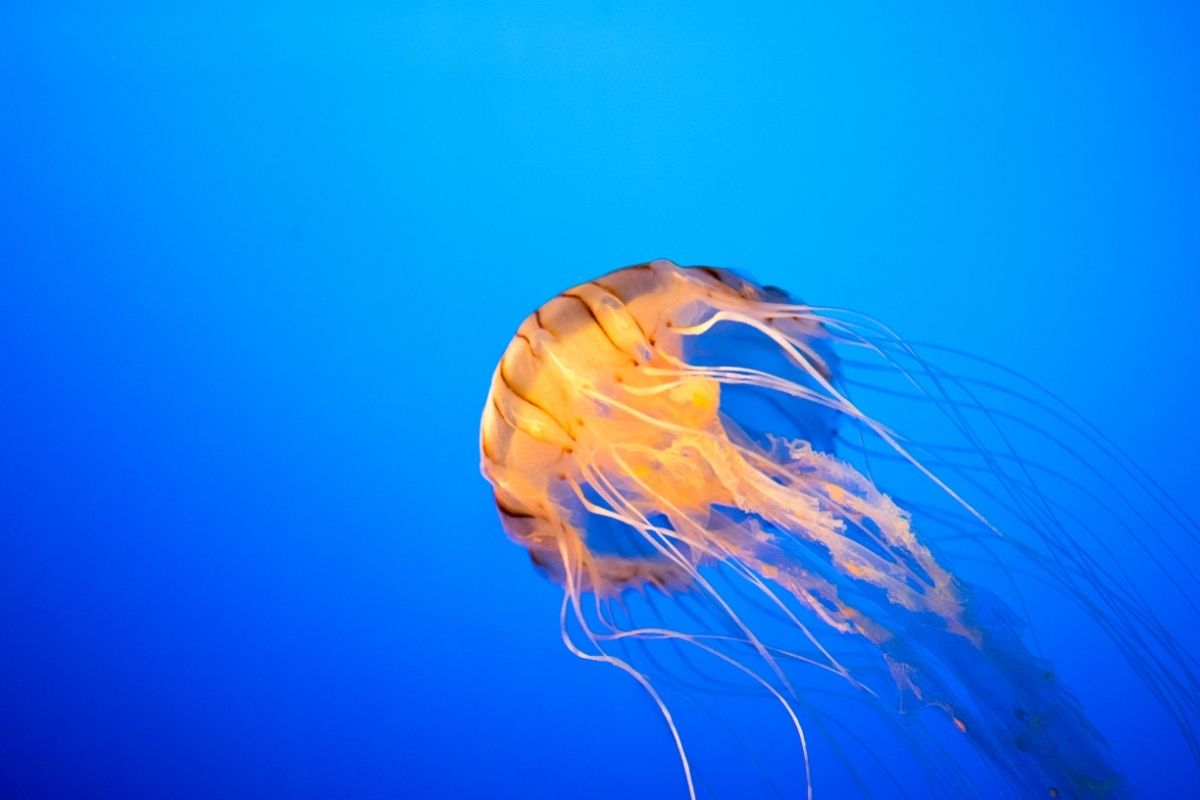
When a jellyfish wants to eat something, it uses its tentacles to grab onto the prey. These tentacles are made up of thousands of individual cells called nematocysts.
Nematocysts are like harpoons that shoot out tiny barbs into the prey, causing pain and sometimes death. This process is called stinging.
If the prey doesn’t die immediately, it might become paralyzed and unable to move away. Once the tentacles have grabbed hold of their prey, the jellyfish pulls itself along using its muscles.
As soon as the tentacles release their grip, the rest of the body moves away. There are a few types of tentacles that a jellyfish may have:
1. Tentacles that contain nematocyst – These are the main tentacles that contain nematocysts.
2. Tentacles without nematocysts – These are smaller tentacles that help the jellyfish to move through the water.
3. Stinging tentacles – These are special tentacles that are used to catch prey. They contain nematocysts that fire out at the prey.
Other parts of a jellyfish include the ‘Cilia’ – These are long hairs that help the jellyfish move through the water. They also help the jellyfish sense its environment. Jellyfish do not have eyes, so they use these hairs to see things.
Once the jellyfish has used its tentacles to catch its prey, it will then use its mouth to suck the prey inside.
Then the jellyfish will digest the food with enzymes produced by its stomach, before excreting waste products back into the surrounding water.
Where Does Jellyfish Waste Come From And Go?
Like with any organism that consumes food, they will have to release the waste. Most of the time, when an animal wants to get rid of its food wastage it will leave its body in the form of feces.
However, jellyfish don’t have an anus. So where does their waste come out from? Well, the same place they ingested their food…their mouth!
Their mouths are located on the top of their bell, and they expel the waste through these openings, transported through the water.
The waste is then carried towards the surface and released into the air. It takes about 10 days for a jellyfish to defecate.
Final Thoughts
Jellyfish are amazing creatures that we should all learn more about. Hopefully, you have enjoyed learning about jellyfish and the different types of food that they eat, and what happens to that food when they are done with it.
In conclusion, the diet of a jellyfish very much varies with the size and species of the jellyfish, and what is appropriate for them to hunt and digest.
So, aside from the fact that jellyfish aren’t actually ‘fish’ at all, what is the most interesting fact you know about this underwater sea creature?
